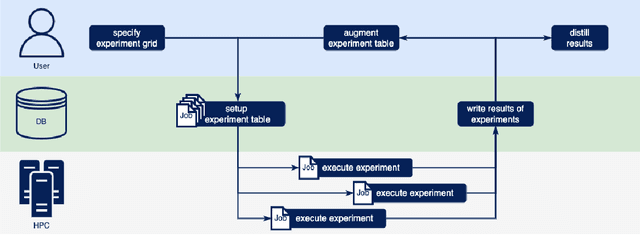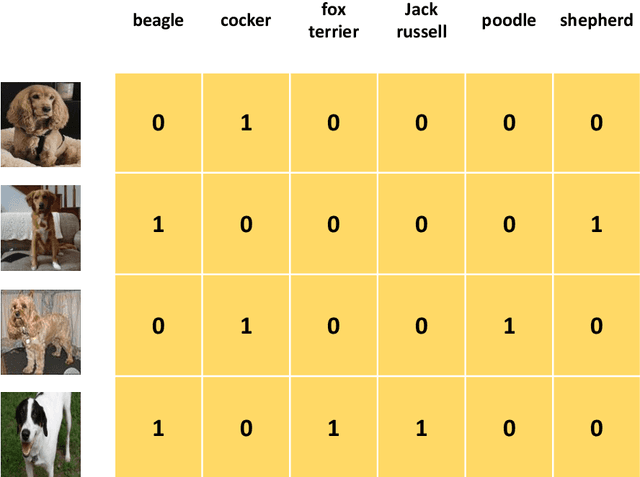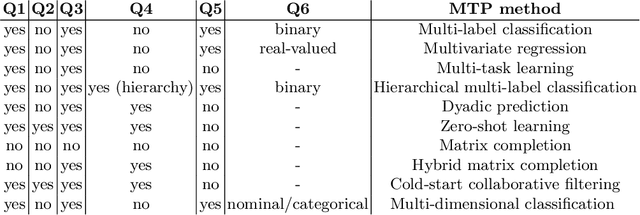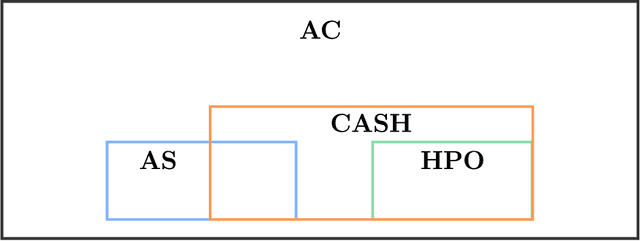Marcel Wever
HyperSHAP: Shapley Values and Interactions for Hyperparameter Importance
Feb 03, 2025Abstract:Hyperparameter optimization (HPO) is a crucial step in achieving strong predictive performance. However, the impact of individual hyperparameters on model generalization is highly context-dependent, prohibiting a one-size-fits-all solution and requiring opaque automated machine learning (AutoML) systems to find optimal configurations. The black-box nature of most AutoML systems undermines user trust and discourages adoption. To address this, we propose a game-theoretic explainability framework for HPO that is based on Shapley values and interactions. Our approach provides an additive decomposition of a performance measure across hyperparameters, enabling local and global explanations of hyperparameter importance and interactions. The framework, named HyperSHAP, offers insights into ablations, the tunability of learning algorithms, and optimizer behavior across different hyperparameter spaces. We evaluate HyperSHAP on various HPO benchmarks by analyzing the interaction structure of the HPO problem. Our results show that while higher-order interactions exist, most performance improvements can be explained by focusing on lower-order representations.
ALPBench: A Benchmark for Active Learning Pipelines on Tabular Data
Jun 25, 2024



Abstract:In settings where only a budgeted amount of labeled data can be afforded, active learning seeks to devise query strategies for selecting the most informative data points to be labeled, aiming to enhance learning algorithms' efficiency and performance. Numerous such query strategies have been proposed and compared in the active learning literature. However, the community still lacks standardized benchmarks for comparing the performance of different query strategies. This particularly holds for the combination of query strategies with different learning algorithms into active learning pipelines and examining the impact of the learning algorithm choice. To close this gap, we propose ALPBench, which facilitates the specification, execution, and performance monitoring of active learning pipelines. It has built-in measures to ensure evaluations are done reproducibly, saving exact dataset splits and hyperparameter settings of used algorithms. In total, ALPBench consists of 86 real-world tabular classification datasets and 5 active learning settings, yielding 430 active learning problems. To demonstrate its usefulness and broad compatibility with various learning algorithms and query strategies, we conduct an exemplary study evaluating 9 query strategies paired with 8 learning algorithms in 2 different settings. We provide ALPBench here: https://github.com/ValentinMargraf/ActiveLearningPipelines.
Position Paper: Rethinking Empirical Research in Machine Learning: Addressing Epistemic and Methodological Challenges of Experimentation
May 03, 2024Abstract:We warn against a common but incomplete understanding of empirical research in machine learning (ML) that leads to non-replicable results, makes findings unreliable, and threatens to undermine progress in the field. To overcome this alarming situation, we call for more awareness of the plurality of ways of gaining knowledge experimentally but also of some epistemic limitations. In particular, we argue most current empirical ML research is fashioned as confirmatory research while it should rather be considered exploratory.
Automated Machine Learning for Multi-Label Classification
Feb 28, 2024Abstract:Automated machine learning (AutoML) aims to select and configure machine learning algorithms and combine them into machine learning pipelines tailored to a dataset at hand. For supervised learning tasks, most notably binary and multinomial classification, aka single-label classification (SLC), such AutoML approaches have shown promising results. However, the task of multi-label classification (MLC), where data points are associated with a set of class labels instead of a single class label, has received much less attention so far. In the context of multi-label classification, the data-specific selection and configuration of multi-label classifiers are challenging even for experts in the field, as it is a high-dimensional optimization problem with multi-level hierarchical dependencies. While for SLC, the space of machine learning pipelines is already huge, the size of the MLC search space outnumbers the one of SLC by several orders. In the first part of this thesis, we devise a novel AutoML approach for single-label classification tasks optimizing pipelines of machine learning algorithms, consisting of two algorithms at most. This approach is then extended first to optimize pipelines of unlimited length and eventually configure the complex hierarchical structures of multi-label classification methods. Furthermore, we investigate how well AutoML approaches that form the state of the art for single-label classification tasks scale with the increased problem complexity of AutoML for multi-label classification. In the second part, we explore how methods for SLC and MLC could be configured more flexibly to achieve better generalization performance and how to increase the efficiency of execution-based AutoML systems.
Information Leakage Detection through Approximate Bayes-optimal Prediction
Jan 25, 2024



Abstract:In today's data-driven world, the proliferation of publicly available information intensifies the challenge of information leakage (IL), raising security concerns. IL involves unintentionally exposing secret (sensitive) information to unauthorized parties via systems' observable information. Conventional statistical approaches, which estimate mutual information (MI) between observable and secret information for detecting IL, face challenges such as the curse of dimensionality, convergence, computational complexity, and MI misestimation. Furthermore, emerging supervised machine learning (ML) methods, though effective, are limited to binary system-sensitive information and lack a comprehensive theoretical framework. To address these limitations, we establish a theoretical framework using statistical learning theory and information theory to accurately quantify and detect IL. We demonstrate that MI can be accurately estimated by approximating the log-loss and accuracy of the Bayes predictor. As the Bayes predictor is typically unknown in practice, we propose to approximate it with the help of automated machine learning (AutoML). First, we compare our MI estimation approaches against current baselines, using synthetic data sets generated using the multivariate normal (MVN) distribution with known MI. Second, we introduce a cut-off technique using one-sided statistical tests to detect IL, employing the Holm-Bonferroni correction to increase confidence in detection decisions. Our study evaluates IL detection performance on real-world data sets, highlighting the effectiveness of the Bayes predictor's log-loss estimation, and finds our proposed method to effectively estimate MI on synthetic data sets and thus detect ILs accurately.
Iterative Deepening Hyperband
Feb 06, 2023Abstract:Hyperparameter optimization (HPO) is concerned with the automated search for the most appropriate hyperparameter configuration (HPC) of a parameterized machine learning algorithm. A state-of-the-art HPO method is Hyperband, which, however, has its own parameters that influence its performance. One of these parameters, the maximal budget, is especially problematic: If chosen too small, the budget needs to be increased in hindsight and, as Hyperband is not incremental by design, the entire algorithm must be re-run. This is not only costly but also comes with a loss of valuable knowledge already accumulated. In this paper, we propose incremental variants of Hyperband that eliminate these drawbacks, and show that these variants satisfy theoretical guarantees qualitatively similar to those for the original Hyperband with the "right" budget. Moreover, we demonstrate their practical utility in experiments with benchmark data sets.
PyExperimenter: Easily distribute experiments and track results
Jan 16, 2023
Abstract:PyExperimenter is a tool to facilitate the setup, documentation, execution, and subsequent evaluation of results from an empirical study of algorithms and in particular is designed to reduce the involved manual effort significantly. It is intended to be used by researchers in the field of artificial intelligence, but is not limited to those.
Meta-Learning for Automated Selection of Anomaly Detectors for Semi-Supervised Datasets
Nov 24, 2022Abstract:In anomaly detection, a prominent task is to induce a model to identify anomalies learned solely based on normal data. Generally, one is interested in finding an anomaly detector that correctly identifies anomalies, i.e., data points that do not belong to the normal class, without raising too many false alarms. Which anomaly detector is best suited depends on the dataset at hand and thus needs to be tailored. The quality of an anomaly detector may be assessed via confusion-based metrics such as the Matthews correlation coefficient (MCC). However, since during training only normal data is available in a semi-supervised setting, such metrics are not accessible. To facilitate automated machine learning for anomaly detectors, we propose to employ meta-learning to predict MCC scores based on metrics that can be computed with normal data only. First promising results can be obtained considering the hypervolume and the false positive rate as meta-features.
Hyperparameter optimization in deep multi-target prediction
Nov 08, 2022



Abstract:As a result of the ever increasing complexity of configuring and fine-tuning machine learning models, the field of automated machine learning (AutoML) has emerged over the past decade. However, software implementations like Auto-WEKA and Auto-sklearn typically focus on classical machine learning (ML) tasks such as classification and regression. Our work can be seen as the first attempt at offering a single AutoML framework for most problem settings that fall under the umbrella of multi-target prediction, which includes popular ML settings such as multi-label classification, multivariate regression, multi-task learning, dyadic prediction, matrix completion, and zero-shot learning. Automated problem selection and model configuration are achieved by extending DeepMTP, a general deep learning framework for MTP problem settings, with popular hyperparameter optimization (HPO) methods. Our extensive benchmarking across different datasets and MTP problem settings identifies cases where specific HPO methods outperform others.
A Survey of Methods for Automated Algorithm Configuration
Feb 03, 2022



Abstract:Algorithm configuration (AC) is concerned with the automated search of the most suitable parameter configuration of a parametrized algorithm. There is currently a wide variety of AC problem variants and methods proposed in the literature. Existing reviews do not take into account all derivatives of the AC problem, nor do they offer a complete classification scheme. To this end, we introduce taxonomies to describe the AC problem and features of configuration methods, respectively. We review existing AC literature within the lens of our taxonomies, outline relevant design choices of configuration approaches, contrast methods and problem variants against each other, and describe the state of AC in industry. Finally, our review provides researchers and practitioners with a look at future research directions in the field of AC.
 Add to Chrome
Add to Chrome Add to Firefox
Add to Firefox Add to Edge
Add to Edge